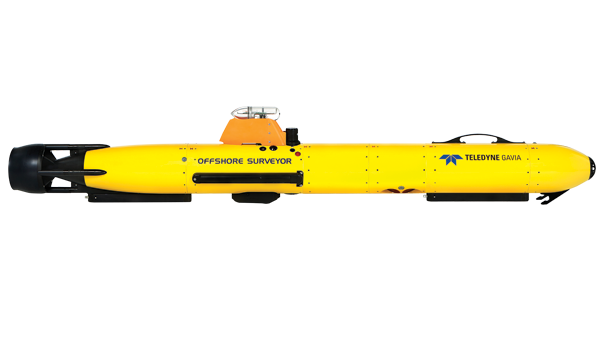Autonomous Underwater Vehicles

The Gavia is an Autonomous Underwater Vehicle (AUV, or unmanned robot submarine) that is made up of “plug-and-play” AUV modules which can be brought together and configured in the field. When assembled with a set of survey-grade sonar modules, a Gavia AUV becomes a self-contained survey solution with a low logistics footprint that is capable of carrying out a wide range of missions for commercial, defence, and scientific applications. Gavia modules are available in 500 or 1000m versions and are fully interchangeable on any Gavia AUV in the field. Gavia AUVs typically operate from vessels of opportunity providing cost effective solutions compared to dedicated survey vessels, ROVs or large tow bodies. The modularity means that the Gavia AUV specification is flexible: all modules are designed around a base 20cm diameter system which includes a nose module, battery module, control module and propulsion module; the AUV length and weight in the field will depend on the set of sonar, navigation, additional battery and ancillary modules chosen for a particular mission. A Gavia AUV has the flexibility to be designated to each task as it arises; it does not have to be dedicated to only one task.
The AUV modularity means that sonar sensors, navigation modules and new battery modules can be added to each operational Gavia as new ones become available or as mission requirements change. The modular design carries a number of other benefits not found in monolithic AUV systems including ease of transport and maintenance, upgradability, and unrivaled flexibility to execute varying types of missions. As a standard, the Gavia is equipped with an OAS, GPS, Iridium Satellite communication, and a Wireless LAN connection for data transfer. Vehicles have the option of using an acoustic modem for communication which provides status updates while the vehicle is submerged. An array of additional sensors and options are available including Side Scan Sonar, SBP, camera, swath bathymetry, ADCP / DVL, high-grade inertial navigation, and obstacle avoidance. Optional environmental sensors such as CTD, Sound Velocity, O2, and optical backscatter sensors can also be added to the Gavia. SeeByte AutoTracker software for autonomous pipeline tracking and inspection can be incorporated into the vehicle. Navigation options include a DVL-aided INS which can be aided by LBL and USBL.